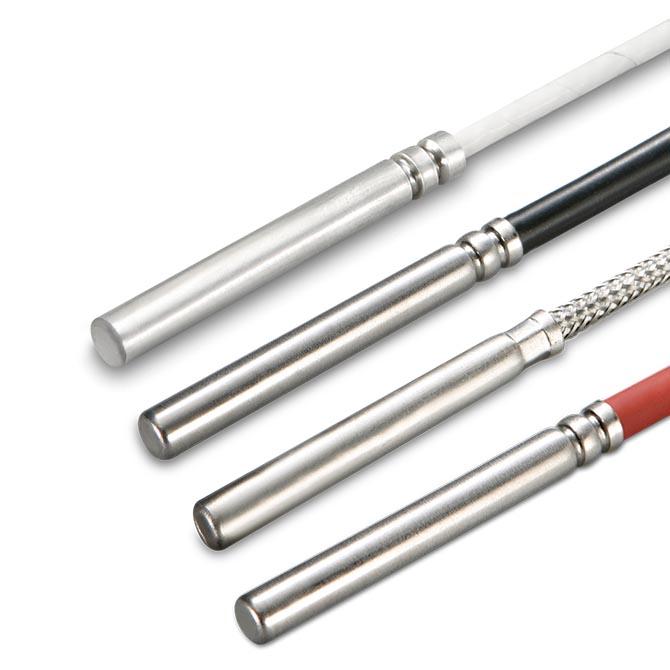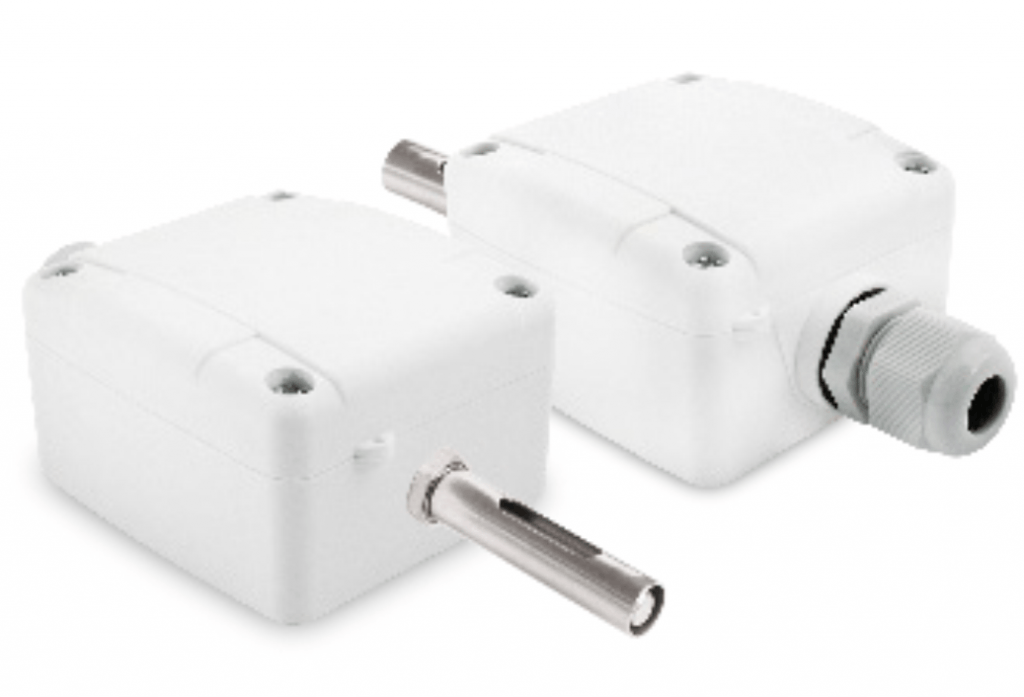PT1000 sensors and NTC thermistors differ in their resistance behavior, materials, and applications. PT1000 sensors, made of platinum, have a nominal resistance of 1000 ohms at 0°C and exhibit a linear increase in resistance with temperature. They are suitable for precise monitoring over a wide temperature range from -200°C to +850°C. NTC thermistors, constructed from metal oxides, have resistances (5k, 10k, 20k) that decrease exponentially with rising temperature, offering high sensitivity over narrower ranges.
PT1000 sensors are ideal for industrial settings requiring high accuracy and stability. In contrast, NTC thermistors excel in consumer electronics and medical devices due to their fast response times. Both types of sensors serve specific needs based on their unique properties, ensuring they are used in the most appropriate applications.
Key Takeaways
- PT1000 sensors have a linear resistance increase with temperature, while NTC sensors exhibit an exponential resistance decrease.
- PT1000 sensors are made from platinum, offering superior accuracy and stability over a broad temperature range.
- NTC thermistors, made from metal oxides, provide higher sensitivity and faster response times but are more prone to drift.
- PT1000 sensors are ideal for industrial and medical applications requiring high precision and stability.
- NTC thermistors are widely used in consumer electronics and medical devices for rapid temperature monitoring.
Basics of PT1000 Sensors
PT1000 temperature sensors, a type of resistance temperature detector (RTD), operate on the principle that their electrical resistance changes predictably with temperature variations. They are highly valued for precision and reliability across a temperature range from -200°C to +850°C. The ‘1000’ in PT1000 denotes a nominal resistance of 1000 ohms at 0°C. As temperature increases, the resistance of the platinum element within the sensor increases linearly, enabling accurate temperature measurements. The linearity ensures minimal deviation and high repeatability, making PT1000 sensors ideal for precise temperature monitoring and control. Their robustness and stability enhance their suitability for diverse industrial environments.
The temperature ranges for Andivi sensors vary depending on the cable type, with a maximum of 105°C for PVC Cable, 180°C for Silicone Cable, 260°C for High-temperature Silicone Cable, and up to 400°C for Glass Wool Cable.
Explore further for guidance on choosing the right temperature probe for your needs.
Basics of NTC Thermistors
In contrast to PT1000 sensors, NTC (Negative Temperature Coefficient) thermistors operate on the principle that their resistance decreases exponentially with increasing temperature, offering a distinct method for temperature measurement. NTC thermistors are typically composed of metal oxides such as manganese, nickel, or cobalt, which are sintered to form a ceramic material. This composition provides high sensitivity to temperature changes across a broad range of temperatures. Common NTC thermistors include 5k, 10k, and 20k variants, where the numerical value indicates the resistance at 25°C. These sensors are widely utilized in applications requiring precise temperature monitoring across diverse temperature ranges, leveraging their robust and responsive material properties for accurate thermal readings.
Various models of PT1000 and PT100 passive sensors
Accuracy and Stability
Evaluating the accuracy and stability of temperature sensors involves examining their response to temperature changes and their ability to maintain consistent readings over time. PT1000 sensors, made from platinum, offer superior accuracy and stability across a broad measurement range. They exhibit minimal drift and are less susceptible to aging effects, ensuring long-term reliability. NTC thermistors, typically composed of ceramic or polymer materials, provide good accuracy within a narrower measurement range but can suffer from greater drift over time and varying environmental conditions. The choice between PT1000 and NTC sensors depends on the application’s required precision and the expected operational environment. PT1000 sensors are often preferred for high-precision tasks, while NTC thermistors are more suited for cost-sensitive, less demanding applications.
Sensitivity and Response Time
Sensitivity and response time are crucial parameters in temperature sensing, determining how quickly and accurately a sensor can detect and relay temperature changes. PT1000 sensors are known for their exceptional stability and wide temperature range. However, their response time is generally slower compared to NTC thermistors. NTC sensors, especially those with lower resistance values like 5k, 10k, and 20k, typically exhibit faster response times due to their higher sensitivity to temperature fluctuations. This increased sensitivity, though, can make NTC sensors more vulnerable to signal interference. In contrast, PT1000 sensors, with their robust design, are less susceptible to such interference, providing more reliable readings over prolonged periods. Both sensor types must balance these factors to achieve optimal performance across various applications.
Ideal Applications
PT1000 sensors are ideally suited for industrial automation and HVAC systems due to their high accuracy and stability over a wide temperature range. Their robustness and precise temperature measurement make them indispensable in industrial applications where environmental conditions can vary greatly. Additionally, these sensors are commonly employed in medical devices, particularly in applications requiring stringent temperature monitoring, such as patient warming systems and laboratory equipment.
Conversely, NTC thermistors, available in variants like 5k, 10k, and 20k, are frequently used in consumer electronics and household appliances due to their cost-effectiveness and fast response times. They are also prevalent in medical devices for applications necessitating rapid temperature changes, such as respiratory equipment. Their broad resistance range offers flexibility in various low-cost, high-volume applications.
Frequently Asked Questions
How Do Environmental Conditions Affect PT1000 and NTC Sensors?
Environmental conditions, such as humidity levels, significantly influence the performance of PT1000 and NTC sensors. Fluctuations in humidity can lead to sensor drift, thereby requiring regular calibration to ensure accurate temperature readings across various environments.
What Are the Installation Requirements for PT1000 and NTC Sensors?
Proper installation techniques for PT1000 and NTC sensors are crucial. Studies indicate that incorrect sensor placement can lead to measurement errors of up to 30%. Accurate positioning and secure connections are essential to achieve optimal performance and reliability.
Can PT1000 and NTC Sensors Be Used Interchangeably?
PT1000 and NTC sensors cannot be used interchangeably due to their distinct characteristics. PT1000 sensors exhibit linear resistance changes with temperature, while NTC sensors show exponential resistance changes. These differences require specific calibration protocols and influence response times, making each sensor suitable for different applications.
What Are the Cost Differences Between PT1000 and NTC Sensors?
Cost Differences Between PT1000 and NTC Sensors
PT1000 sensors generally have higher manufacturing costs due to their superior materials and construction, but they offer excellent long-term reliability. In contrast, NTC sensors (e.g., 5k, 10k, 20k) are more cost-effective to produce, though they may not provide the same level of reliability over extended periods.
How Do PT1000 and NTC Sensors Perform in Extreme Temperatures?
PT1000 sensors provide reliable performance across a broad temperature range, making them suitable for extreme conditions. In contrast, NTC sensors may lose accuracy and stability in extreme temperatures, though they generally perform well in moderate conditions.
How to Scale Temperature Based on Resistance for PTC and NTC Thermistors?
We’ve compiled essential information and guidelines for temperature scaling based on resistance for PTC and NTC thermistors. The tables will guide you according to the type of thermistor used in your passive sensors.











